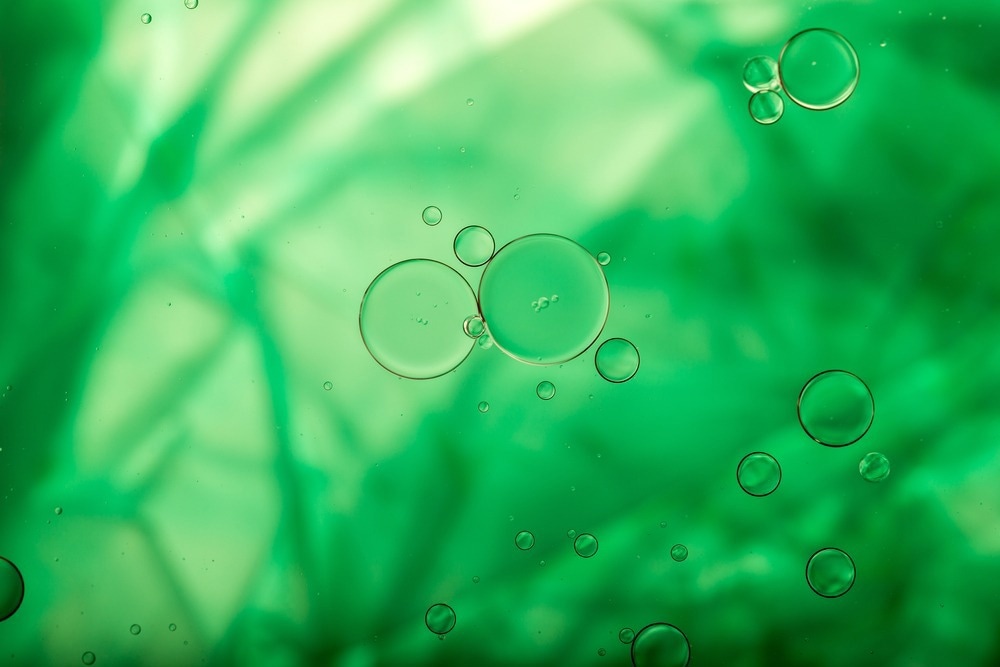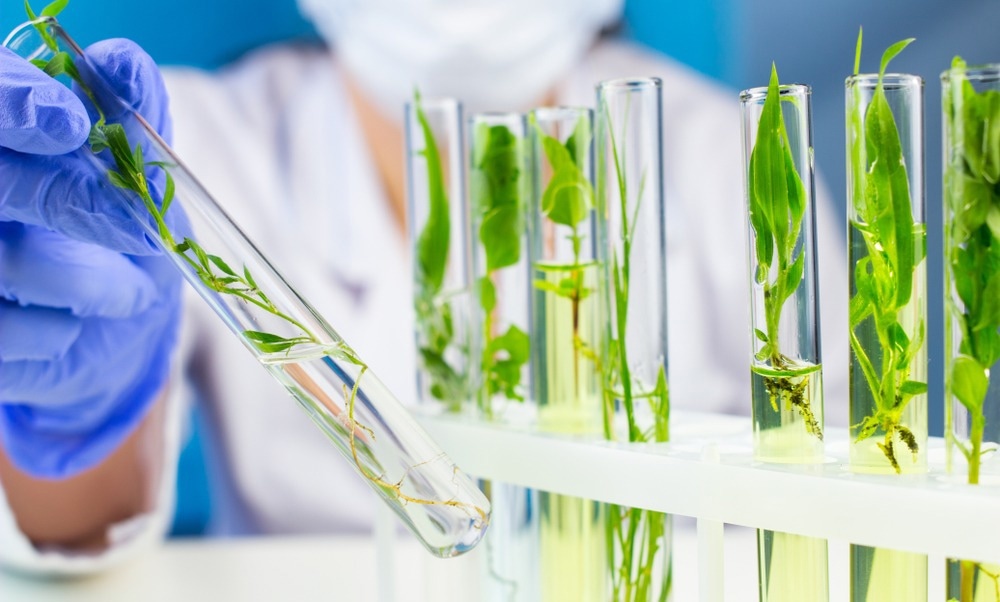In the past two decades, nanotechnology has enabled the manipulation of nanoparticles for specific applications. Nevertheless, some of the methods used for nanoparticle synthesis are not classed as eco-friendly.

Image Credit: Ozgur Senergin/Shutterstock.com
Green nanotechnology is a relatively new area of research that promises the production of important nanoparticles, such as quantum dots (QDs), using green or eco-friendly processes.
Importance of QDs
QDs are a heterogenous group of small, brightly fluorescent nanoparticles that are used for medical, sensing, and imaging applications. A QD is an extremely tiny spot of matter whose diameter ranges between 1 nm and a few tens of nanometers. QDs are typically made from semiconductors (e.g., silicon).
Interestingly, even though these nanoparticles are crystals, they behave similarly to individual atoms; as a result, they are often called “artificial atoms”. Since these semiconductor nanocrystals are monodisperse and exhibit high luminescence, they are popularly used as labels in bioanalytical applications.
The intrinsic energy signature and size of dots affect the optical characteristics of QDs. The size of this nanoparticle is highly dependent on the nature of the precursor.
It is important to maintain the size of QDs during their synthesis because different QD sizes emit and absorb different colors due to varying energy levels within the crystal. In the fluorescence spectrum, the color varies as per the energy emitted by the crystal. Smaller QD dots emit higher-energy light (blue), while larger dots emit lower-energy light (red).
Non-Green Methods of QD Synthesis
QDs are produced using non-green methods that include X-ray lithography, molecular beam epitaxy, and the ion implementation process. Earlier, QDs were mainly synthesized using physical methods. During this time, the main goal was to obtain pure QDs; however, over time, the focus shifted to obtaining controlled size and shaped nanocrystals.
One of the non-green procedures is an organometallic colloidal synthesis (OCS) method that requires high temperature for utilizing the high boiling point of organic solvents, such as tri-n-octylphosphine oxide, trioctylphosphine, and hexadecyl amine. All these solvents contain long alkyl chains.
Besides the high energy requirement, the OCS method further requires hazardous chemicals such as dimethylcadmium and chalcogenides. This method synthesizes highly hydrophobic QDs, which are only soluble in non-polar solvents, such as chloroform, hexane, and toluene.
Another non-green procedure to develop QDs is the aqueous colloidal synthesis (ACS) method. Although this method develops hydrophilic QDs, it has exhibited decreased photoluminescence. A typical ACS procedure requires a heavy metal precursor which is soluble in water. In contrast to the OCS method, the ACS method does not require a rigorous inert atmosphere.
Green Methods for QD Synthesis
Typically, green synthesis is associated with less hazardous chemical synthesis. It involves the use of safer chemicals, solvents, and auxiliaries. Green synthesis methods are energy efficient and use renewable resources.
Carbon dot (CD) QDs, also known as carbon dots, have been synthesized using non-toxic, renewable precursors and solvents. CDs synthesized in this process were found to be non-toxic and chemically stable.
In addition to synthesizing non-toxic CDs, green synthesis methods have also aided in low-cost and easy production methods. Hydrothermal synthesis is the most common green synthesis method for CD production. This method requires reaction temperatures ranging from 120 – 240°C and pressurized autoclave vessels, and the reaction time varies between 3 and 12 hours.
Green synthesis allows using water and benign organic solvents, such as ethanol. It further involves the utilization of renewable materials that may have dual functions. For instance, walnut oil is used as a solvent and carbon source for the green synthesis of CD.
Green methods include solvent-free synthesis methods, such as dry heating, which requires a high temperature of around 300°C under ambient pressure conditions. The dry heating method requires high temperature with a prolonged reaction time. Optimization of reaction parameters enhances yield while minimizing the energy requirement.
Compared to hydrothermal synthesis, microwave synthesis requires lesser time and energy, i.e., 800 W for 3 minutes, to produce CDs. This synthesis method allows direct and selective heating through resonance with the vibrational frequencies of molecules.

Image Credit: MW 3DStudio/Shutterstock.com
Synthesis of QDs Using Renewable Sources
A wide range of plants is used as a renewable carbon source for the green synthesis of CDs. In addition to plants’ leaves, flowers, and roots, other forms of plant biomass, such as kernels, peels, stalks, and barks, are also used for QD synthesis.
Plants used as carbon sources generally require pre-processing to remove excess water and reduce particle size. Drying the plant parts under direct sunlight reduces the energy requirement compared to conventional dehydration methods. Fruit juices are used for quick hydrothermal synthesis of CD. This method can skip the step of redispersion of dried plant matter in water.
Recently, CDs have been synthesized from citric acid and the amino acid l-arginine using a hydrothermal process. The microwave technique was also used in the green synthesis of QDs, which utilized urea and the amino acid glycine. Although all renewable refined compounds are not strictly green, they use renewable raw materials with a sustainable synthesis process.
Purification is a crucial step post-CD synthesis, as it minimizes the presence of impurities. A poor purification process can interfere with uniform physical and optical properties. Green CD synthesis utilizes three types of purification methods, namely, dialysis, centrifugation, and filtration.
Applications of QDs Developed Using Green Methods
QDs are used across different research disciplines, such as developing fluorescent inks, catalysis, real-time bioimaging, and drug delivery. Owing to their small size, high surface-to-volume ratio, geometry-dependent electronic properties, and high reactivity, they are used for chemical sensing.
For instance, CDs synthesized from Eleocharis dulcis juice exhibit high selectivity towards Fe3+ relative to other metals. Similarly, those synthesized using date kernels have been used to detect zoledronic acid, an anticancer agent.
QDs synthesized from watermelon peels and peanut shells have been used in the bioimaging of HeLa cells and HepG2 cells, respectively. These were also used for in vivo imaging of Zebrafish embryos. For biomedicine application, CDs that were synthesized from mulberry leaves and subsequently loaded with the drug lycorine, were used in cancer treatment.
References and Further Reading
Fu, F. et al. (2022) Immunoregulatory Activity of Herbal Tea-Derived Carbon Dots. ACS Applied Bio Materials, 5(4), pp. 1604–1609. https://doi.org/10.1021/acsabm.2c00016
Yao, L. et al. (2022) Carbon Quantum Dots-Based Nanozyme from Coffee Induces Cancer Cell Ferroptosis to Activate Antitumor Immunity. ACS Nano, 16(6), pp. 9228–9239. https://doi.org/10.1021/acsnano.2c01619
Manikandan, V and Lee,Y. N. (2022) Green synthesis of carbon quantum dots and their environmental applications. Environmental Research, p. 212. https://doi.org/10.1016/j.envres.2022.113283.
Chahal, S. et al. (2021) Green synthesis of carbon dots and their applications. RSC Advances, 41(11), pp. 25354–25363. https://doi.org/10.1039/D1RA04718C
Desmond, J.L. et al. (2021) Critical overview on the green synthesis of carbon quantum dots and their application for cancer therapy. Environmental Science: Nano, 8, pp. 848–862. https://doi.org/10.1039/D1EN00017A
Bonilla, C. A. M. and Kouznetsov, V. V. (2016) “Green” Quantum Dots: Basics, Green Synthesis, and Nanotechnological Applications. In M. L. Larramendy, & S. Soloneski (Eds.), Green Nanotechnology - Overview and Further Prospects. IntechOpen. https://doi.org/10.5772/62327
Disclaimer: The views expressed here are those of the author expressed in their private capacity and do not necessarily represent the views of AZoM.com Limited T/A AZoNetwork the owner and operator of this website. This disclaimer forms part of the Terms and conditions of use of this website.